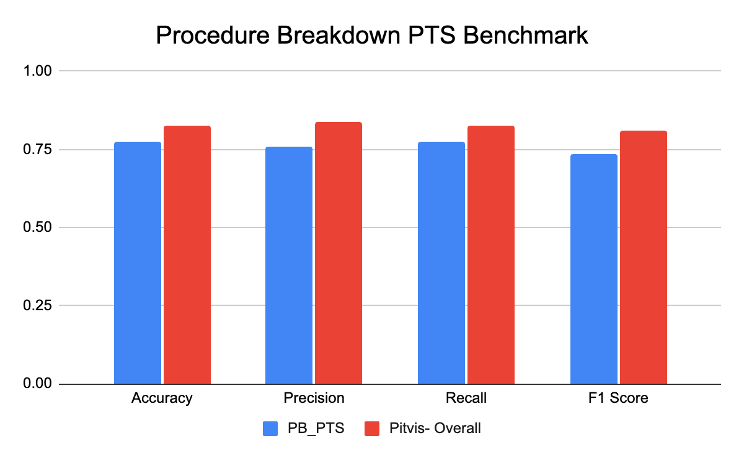
The North American Skull Base Society (NASBS) 2025 Annual Meeting in New Orleans denoted a significant milestone in SDSC’s rapid evolution over the past few years. When Dr. Daniel Donoho, SDSC’s Founder and President, and Dr. Dhiraj Pangal, SDSC’s Clinical Data Science and Customer Success Consultant, attended two years ago, SDSC was little more than an idea. Since then, it has flourished into a fully-fledged nonprofit Medical Research Organization (MRO) with the potential to revolutionize surgical education and research. Just one year after SDSC’s first official presence at NASBS, it was incredible to see how our Surgical Video Platform (SVP) has matured into a transformative tool – empowering researchers and clinicians worldwide to publish and present their pioneering work at this illustrious event.
At NASBS 2025, leading experts came together to discuss the latest advancements in the field of skull base surgery. Both Andrew Porter, COO, and Margaux Masson-Forsythe, Director of Machine Learning (ML), attended to showcase SDSC’s latest innovations in neurosurgical research. They hosted SVP-powered workshops and gathered valuable new insights from conference attendees, using actionable feedback to further refine the ML team’s development pipeline and SDSC’s product offerings. Their efforts proved successful across the board – expanding SDSC’s reach, engaging with new users, acquiring vital data, and most importantly, gathering direct input from surgeons to drive continued growth and improvement.
Bringing AI to the Surgical Community
To highlight SDSC’s leading role in the AI-driven neurosurgical space, Margaux delivered a faculty talk titled “A User’s Guide to Currently Available AI Systems for Surgical Research and Care.” This informative presentation provided a comprehensive overview of AI’s role in surgery at the pre-operative, intra-operative and post-operative stages, and demonstrated how SVP can be leveraged for clinical research post-surgery. Margaux specifically highlighted how SDSC provides data science support to help users study their clinical research questions with our ML technology. For example: “How does surgical tool management correlate to patient outcomes?” or “Can quantitative feedback help residents in their journey to excellence?”

SDSC also hosted four exclusive one-hour workshops, featuring live demonstrations of our platform. Led by Dr. Ruth Lau and Dr. Jonathan Chainey, two wonderful neurosurgeon-collaborators of SDSC, the sessions focused on how AI can be integrated into surgical workflows to enhance research, education and patient care. These sessions were a fantastic opportunity to share ideas, brainstorm, and acquire feedback on how the SVP could become even more intuitive. With the conference’s highly collaborative spirit, combined with SDSC’s unwavering commitment, SVP is continually being pushed towards greater capabilities for its users.
.png)
Expanding our Research Impact
SDSC’s NASBS contributions extended beyond our own presentations. Our technology facilitated two SVP-powered research talks, “Resection of pituitary Adenomas with Subarachnoid Invasion: Artificial Intelligence Analysis of Surgical Technique” by Dr. Jonathan Lamano, and “Endoscopic Endonasal Transcavernous Surgery for Pituitary Adenoma Resection: AI Analysis of Surgical Technique” by Dr. Jonathan Chainey, and a poster presentation from Stanford University.
.png)
These talks were pivotal in showcasing how SVP can carefully dissect nuances in surgical technique using SDSC’s ML models. By leveraging AI-driven analytics, researchers demonstrated how objective performance metrics can be established to assess and refine surgical technique in skull base surgeries. Each project utilized custom-built ML models curated by our ML team, illustrating the flexibility of SVP to adapt to different surgical procedures – not just neurosurgery, but any operative discipline. For more insights into Stanford University’s SVP research, check out their blog here.
New Data, Stronger Collaborations, Greater Impact
One of the most exciting outcomes of NASBS was the addition of 50+ skull base neurosurgery case videos from Dr. Juan Fernandez-Miranda and Dr. Michael Chang at Stanford University, plus 13 additional cases from other cornerstone partners. This influx of new data underscores the importance of collaboration and collective ambition within the surgical community. By engaging with numerous conference attendees throughout the event, SDSC has forged new connections, strengthened existing partnerships, and advanced our shared mission to lead AI-powered surgical research.
Going forward, SDSC is committed to building on the incredible progress we’ve made over the past couple years. Since our first NASBS attendance, SVP has evolved from a promising concept into a powerful tool actively transforming surgical research. Now, we are focused on expanding its capacity to support a wider range of procedures, integrating more diverse datasets, and refining our AI models to enhance accuracy and efficiency. The insights gained from this year’s conference will directly guide our next steps as we continue to develop cutting-edge tools tailored to the real-world needs of surgeons and researchers.

SDSC extends a huge thank you to everyone who joined us at NASBS 2025. Your support has been instrumental to our journey. As we celebrate how far SDSC has come, we remain dedicated to keeping this momentum going – pushing the boundaries of AI-driven surgical innovation and creating a future of equitable surgical care together.




